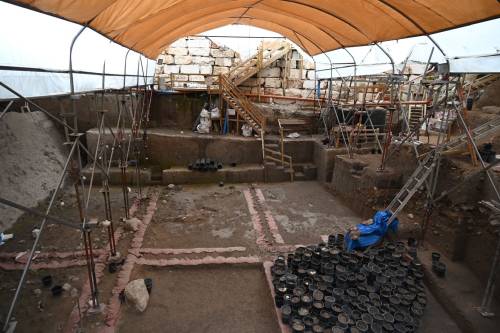In the second season of excavations at Hyrcania in the Judean wilderness, archaeologists uncovered a colorful Byzantine mosaic and two Jewish ritual baths.
A tourist who came to Shiloh to pray for a child found a rare Second Temple period coin when he returned to give thanks.
The discovery at a Byzantine monastery near Jerusalem of a female skeleton wrapped in heavy metal chains is raising questions about women’s participation in extreme asceticism.
Ferrell Jenkins has posted a photo of Gibeah of Saul from circa 1970.
New release: After the Tomb: The Unexpected Encore, by Stephen Austin. In a series of 50 vignettes, this book imagines what may have happened in the 50 days between Jesus’s resurrection and Pentecost. My first impression is very positive.
New release: Scribal Representations and Social Landscapes of the Iron Age, by Mahri Leonard-Fleckman (Oxford University Press, $99)
A conference on the archaeology and history of Jerusalem will be held at the Schloss Beugen in Rheinfelden, Germany, on April 27th to 29th, 2025. Aren Maeir has posted the schedule.
Accordance Bible Software is running a sale of up to 67% off image collections, virtual tours, biblical atlases, and more. There are a number of offerings that are the lowest prices I’ve ever seen.
Behind the Scenes of the New Testament, edited by Bruce W. Longenecker, Elizabeth E. Shively, and T. J. Lang, is Walking The Text’s recommended resource this month.
Gesher Media has just released an Ark of the Covenant poster. Regularly priced at $34, you can use coupon ARK20 to get it for only $20 through February 28.
HT: Agade, Ted Weis, Gordon Franz, Keith Keyser
